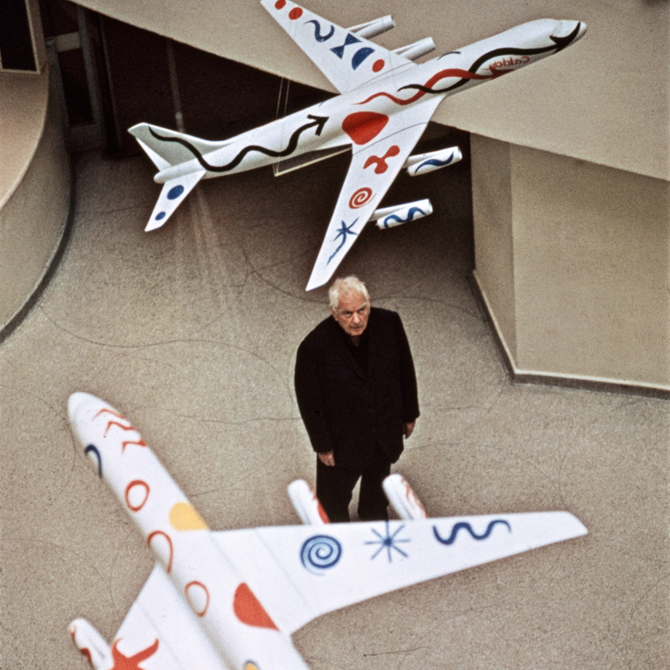“He hears a loudspeaker / Call him well-known,” W. H. Auden wrote in a poem toward the end of his life. “But knows himself no better.” Fame, Auden was suggesting, can be an enigma for the famous. Your admirers assume that they know who you are, but the artist, to remain creatively alive, must keep asking questions. I thought a lot about Alexander Calder’s confrontations with fame as I worked on the second and final volume of my biography of the pathbreaking American sculptor; he was 78 when he died, in 1976.
What I discovered—what often surprised me—was how frequently Calder challenged assumptions about what a sculpture by Calder ought to be. Although a charming, voluble, and highly social man, Calder by and large preferred to let his work speak for itself. But a biographer develops a sixth sense for an artist’s thinking, and during the dozen years I spent looking at Calder’s life I became convinced that the ruptures and leaps that characterized his work were fueled by a desire to shake up his own assumptions—as well as those of his admirers. I think that’s what Calder was doing when, mere months after his enormously popular 1943 Museum of Modern Art retrospective, he produced works made of discrete elements cast in bronze, the elements to be balanced one on top of the other so that this ancient and earthbound material suddenly moved. For Calder, who was already recognized as a master of mobiles that looked as light as air, this embrace of the heaviness of bronze was a way of upending his own accomplishment. By mobilizing bronze, he made the known suddenly, thrillingly unknown.
Calder frequently challenged assumptions about what a sculpture by Calder ought to be.
Calder never stopped re-inventing his own powers of invention. He first established himself in Paris in the late 1920s with the tiny figures and animals in his Cirque Calder; he put them through their playful paces in performances for small audiences in a hotel room on the Left Bank. But this poet of kinesis could rarely resist the possibilities of stasis. With the jagged black behemoths that he designed for urban spaces in the 1960s and 1970s, he rejected amusement in favor of awe and maybe even fear and trembling; these monumental sculptures are as likely to bewilder as beguile.
Near the very end of his life, when he was universally admired as a pioneering abstract artist, he re-engaged with the human figure in a series of roughly six-foot-high impressions of women cut from sheet metal; they might be antediluvian goddesses or hardworking burlesque artists; it’s not easy to say. Calder occasionally complained about the misunderstandings that persisted, in spite of or in the midst of his fame. At the time of a wildly successful retrospective at the Guggenheim Museum in New York in 1964 he joked, “My fan mail is enormous—everybody is under six.” Asked toward the end of his life his opinion of Salvador Dalí, he responded, “Dalí had begun by being a serious painter and now, it’s the circus. Me, it’s the opposite.” Time and again, Calder was saying, “You think you know me and my work? Let’s take another look!”
Jed Perl’s Calder: The Conquest of Space is out now from Knopf


